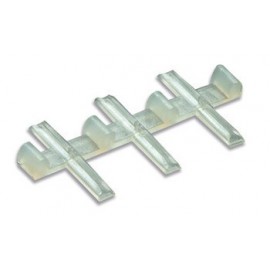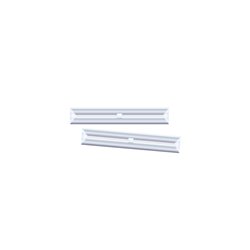In the past some people have said to use oven cleaner to remove paint. I have found that this is quite an evasive...
No products
Product successfully added to your shopping cart
There are 0 items in your cart. There is 1 item in your cart.
Search Tips
Where would I typically use an insulated rail joiner on a layout?
An insulated rail joiner is a small piece of plastic or metal that is used to separate two sections of track electrically. It is typically used in situations where a modeller wants to create separate electrical circuits on their layout.
One common use of an insulated rail joiner is to create a section of track that can be turned on or off independently from the rest of the layout. This is a useful factor when planning a siding or a spur that can be controlled separately, such as for switching operations. By isolating the track with an insulated rail joiner, the modeller can control the power to that section of the track without affecting the rest of the layout.
Another use of an insulated rail joiner is to create a section of track that is isolated from the rest of the layout for programming locomotives or running DCC (Digital Command Control) operations. By isolating a section of track with an insulated rail joiner, the modeller can prevent other locomotives on the layout from being adversely affected by any programming being conducted.
Insulated rail joiners can also be used to create blocks on a layout, which are sections of track that can be independently powered and controlled. This is sometimes used in larger layouts where a modeller wishes to have multiple trains running at the same time. By using insulated rail joiners to separate the track into blocks, they can then control the power to each block individually and prevent trains from colliding.
Click here to receive the tips weekly in your mailbox. You can unsubscribe at any time.










